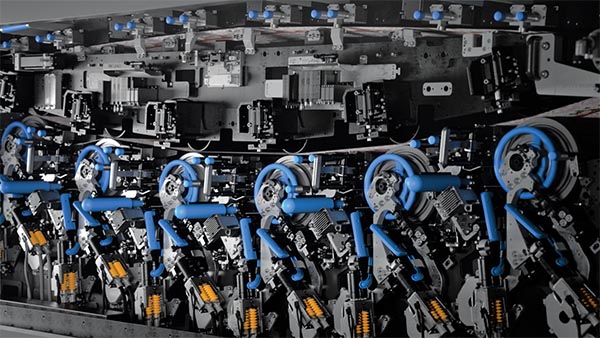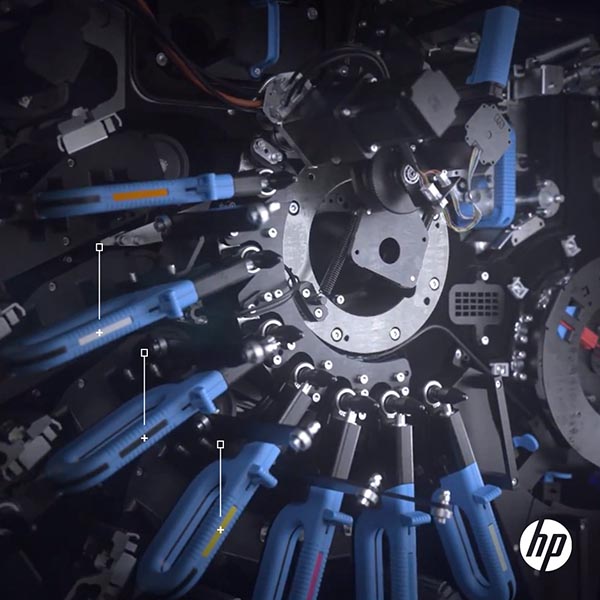
(This article originally ran in the June 3 edition of the drupa daily.)
From its inception, Indigo set out to offer the print industry digital capabilities comparable to analog in terms of image quality and application versatility. The company built its Liquid Electrophotography (LEP) technology upon three foundations: ElectroInks, thermal offset transfer, and direct contact transfer. Together, they enabled a high color gamut, a wide range of inks, high coverage and vast media versatility, and laid down the basis for new industry standards.
Yet the constant search for a better technological solution continued, with the need to augment the renowned offset-matching quality of HP Indigo digital print with analog-matching speed. Building on the company's core LEP printing process, HP Indigo’s R&D labs developed the innovative LEPx technology, which currently runs at up to 120 meters per minute.
LEPx delivers the conceptual shift which disrupts the association of digital print with short runs, allowing HP Indigo to handle true long run production in the label segment in which it pioneered. While enabling label converters to profitably produce longer runs and many more jobs a day with variable graphics and content, LEPx also reduces labor costs, waste, and energy consumption.
LEP and LEPx technologies will continue to coexist and evolve side by side, empowering HP Indigo customers to grow and prosper above and beyond the rest of the market.

Die Technologie von HP Indigo: LEP und LEPx
Von Anfang an war es das Ziel von Indigo, der Druckindustrie digitale Möglichkeiten zu bieten, die in Bezug auf Bildqualität und Anwendungsvielfalt mit analogen Verfahren vergleichbar sind. Das Unternehmen baute seine LEP-Technologie (Liquid Electrophotography) auf drei Grundlagen auf: ElectroInks, Thermo-Offset-Transfer und Direkt-Kontakt-Transfer. Zusammen ermöglichten sie eine große Farbskala, eine breite Palette von Druckfarben, eine hohe Deckung und eine große Medienvielfalt und legten die Grundlage für neue Industriestandards.
Dennoch wurde die ständige Suche nach einer besseren technologischen Lösung fortgesetzt, um die bekannte, dem Offsetdruck entsprechende Qualität des HP Indigo-Digitaldrucks durch eine dem Analogdruck entsprechende Geschwindigkeit zu ergänzen. Aufbauend auf dem zentralen LEP-Druckverfahren des Unternehmens entwickelten die Forschungs- und Entwicklungslabors von HP Indigo die innovative LEPx-Technologie, die derzeit mit einer Geschwindigkeit von bis zu 120 Metern pro Minute arbeitet.
LEPx ermöglicht einen konzeptionellen Wandel, der die Assoziation des Digitaldrucks mit Kleinauflagen durchbricht und HP Indigo in die Lage versetzt, echte Großauflagen im Etikettensegment zu produzieren, in dem das Unternehmen Pionierarbeit geleistet hat. LEPx ermöglicht es Etikettenverarbeitern, größere Auflagen und viel mehr Aufträge pro Tag mit variablen Grafiken und Inhalten rentabel zu produzieren und gleichzeitig die Arbeitskosten, den Abfall und den Energieverbrauch zu senken.
Die LEP- und LEPx-Technologien werden auch in Zukunft nebeneinander bestehen und sich gemeinsam weiterentwickeln, so dass HP Indigo-Kunden wachsen und erfolgreicher sein können als der Rest des Marktes.














